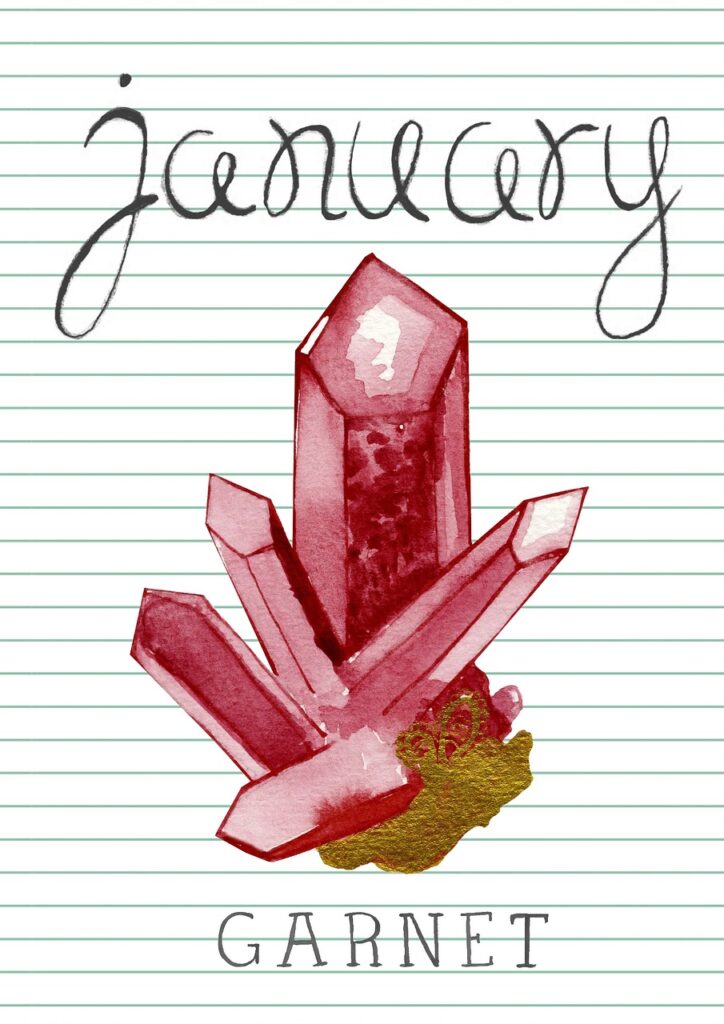Back to: The Magic of Birthstones MB1
Garnets January
Those born in January are lucky to have the beautiful and diverse garnet as their birthstone.
Commonly associated with the colour red, these gemstones can be found in almost any colour and are popular choices for jewellery of all types., The garnet family is one of the most complex in the gem world. It’s not a single species but rather consists of several species and varieties.

Symbolism
Some believe that garnets are a protective stone, shielding the wearer from injury. This made them particularly popular amongst warriors and royalty. Occasionally associated with life-giving blood, red-variety garnets are also connected to vitality, love, and light
Colour
Depending on the type of garnet, you can choose from red, purplish, green, yellow, and orange options. It is not uncommon to find large garnet crystals with vibrant hues and clear transparency.
Where do I find garnets?
Garnets come from many different regions and countries. Bohemia was the primary source of the red pyrope garnets, African now supplies most of the world’s garnet.
Namibia produces demantoids, and most of the bright green tsavorites in the market come from Kenya, Tanzania and Madagascar. Namibia and Tanzania are also key sources of the rich orange-to-yellow spessartine garnets.
The birthstone for January can also found in Brazil, Iran, Afghanistan, Pakistan, India, Myanmar, and Sri Lanka.
How do I take Care of my Garnet?
The different types of garnet range between 6.5 and 7.5 on the Mohs scale of hardness. This means that this birthstone is more susceptible to damage than rubies, sapphires and diamonds. So while not all garnets are good candidates for daily wear, they are ideal for earrings, brooches and pendants. Give thought to how you store your garnet. If you let it rub against harder gems, again, think diamonds, rubies and sapphires, it can be scratched. And in turn garnet can scratch softer gems, such as opals or pearls.